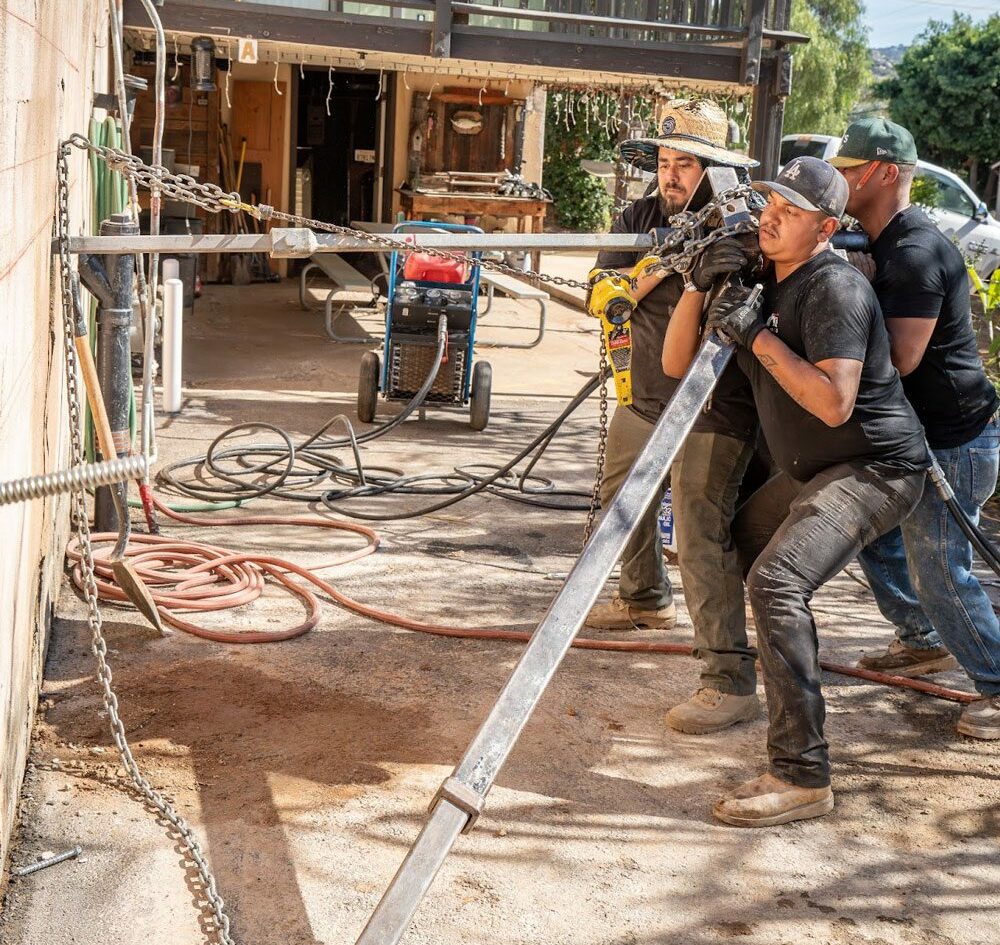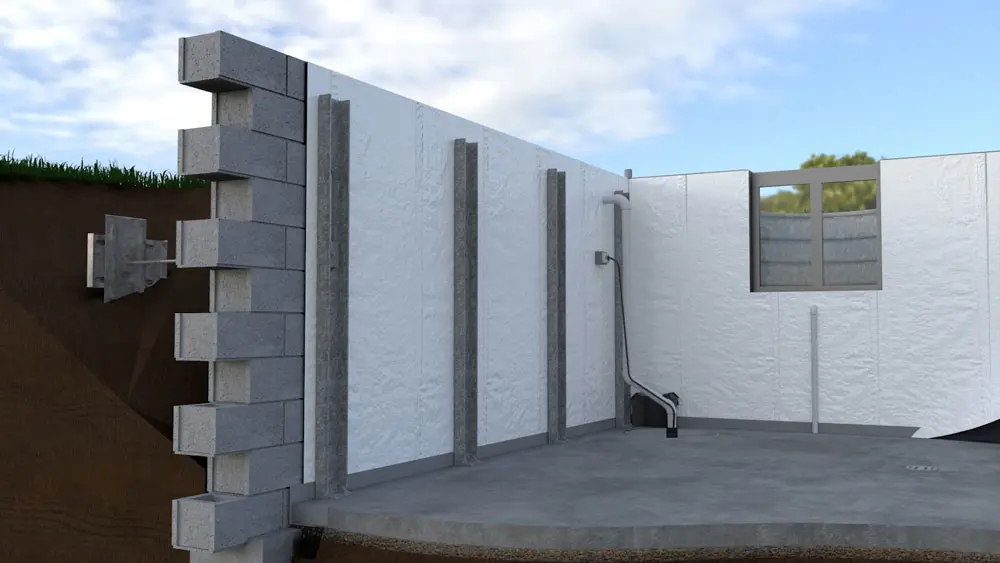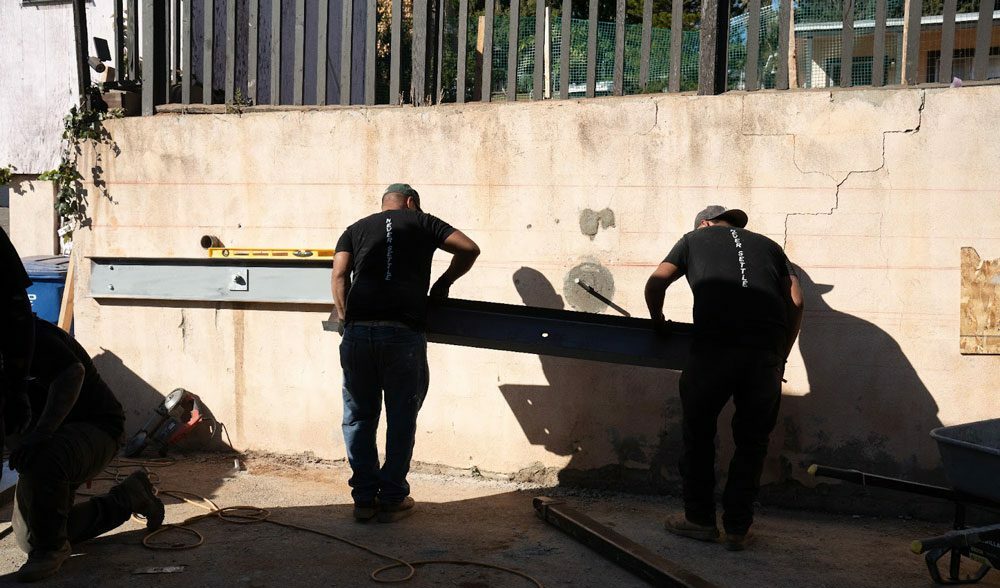
Although they are beneficial in most cases, anchors are not necessarily required for all retaining walls. A retaining wall anchor is an option that builders can use to enhance the strength of their walls during construction or to repair them after a structural failure.
In this article, we’ll provide you with a clear understanding of what wall anchors are and share a few of the most common types. We’ll also explain the main ways these structural components aid the stability and longevity of retaining walls.
What is a Retaining Wall Anchor?
A retaining wall anchor is a type of tieback, a structure that helps increase the strength of retaining walls and other structures. Those who construct retaining walls may choose to add anchors during the construction process or add them following construction if the wall receives damage or begins to fail in some other way.

While there are several types of retaining wall anchors, they each share a similar set of components. Wall anchors begin with some form of connection to the wall itself. From that connection point, a rod extends horizontally into the earth that the wall retains. At the end of the rod within the earth, it connects to some form of weight, such as a concrete block.
Retaining walls are responsible for holding an immense amount of weight, and when they fail, they often bow or begin to lean. When anchors are in place, they make the wall better capable of holding the volume of soil behind it.
Types of Retaining Wall Anchors
There are several types of wall anchors you should know about, each of which serves the same purpose in a slightly different way. Below are three of the most common types of anchors with descriptions:
- Deadman Anchors: Deadman anchors connect to the back of a retaining wall and include a metal rod connecting to a heavy block of concrete embedded in the earth.
- Helical Anchors: Rather than having a weight embedded in the soil, helical anchors are like large screws that twist into the earth. Construction teams can install helical anchors by drilling them directly through an existing wall.
- Wall Plate Anchors: As their name suggests, these anchors include a plate visible on the wall’s front facade. These plates connect to a rod that runs deep into the soil behind the wall. Wall plate anchors can be installed after construction to reinforce a wall.
Benefits of Using Anchors in Retaining Wall Design

While anchors aren’t always necessary for retaining walls, they do have their benefits. As noted above, anchors help improve the wall’s overall strength, making it better capable of holding back the soil it retains. This added stability allows your wall to perform more efficiently and adds to the wall’s overall longevity.
In addition to increasing the strength and lifespan of a wall, anchors also come with the benefit of requiring little to no maintenance. Since anchors consist of durable materials such as metal and concrete and do not have exposure to the elements, they rarely need repairs or replacement.
Types of Walls that Can Benefit from Anchors
Don’t make the mistake of believing that wall anchors can only benefit one type of wall. The reality is that multiple types of walls stand to improve their strength via the installation of an anchor, including the following:
- Standard Retaining Walls: As mentioned throughout this article, standard retaining walls can significantly improve their strength thanks to the installation of anchors during or after construction.
- Basement Walls: Although you might not think of it, basement walls are nothing more than retaining walls that hold the soil surrounding your foundation. As is true of standard retaining walls, basement walls can also become stronger via anchors.
- Seawalls: These walls must be exceptionally strong to perform their job, so they almost always include some form of anchor in their design.
Can You Install Wall Anchors as a DIY Project?
If you have a retaining wall on your property and wish to increase its strength, attempting DIY retaining wall anchor installation can be tempting. After all, completing the work on your own will allow you to avoid the cost of hiring a professional. However, we do not recommend this approach. These projects are not only challenging but also dangerous if you lack experience. Hiring a qualified construction team ensures your anchor installation unfolds as safely and efficiently as possible.
Get Advice on Your Retaining Wall
Whether or not your retaining wall needs an anchor is difficult for the average homeowner to determine independently. Fortunately, hiring a construction professional experienced in retaining wall construction can help you make the best decision for your wall and your property.
If you live in Southern California, Nevada, or Arizona and need assistance with retaining wall construction or repair, contact our team at Dalinghaus Construction. We have extensive experience repairing retaining walls, installing helical tiebacks, and providing various additional construction services. Contact us today to learn more about what we can offer you.






